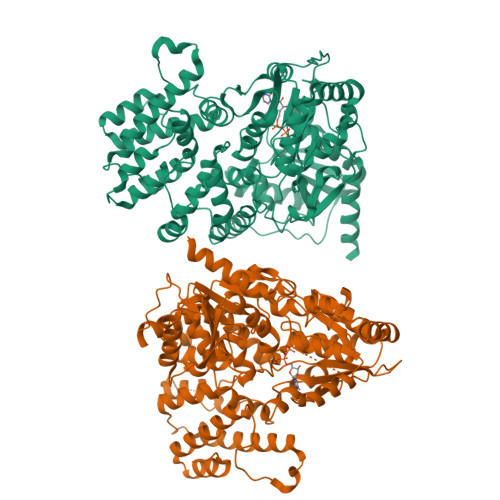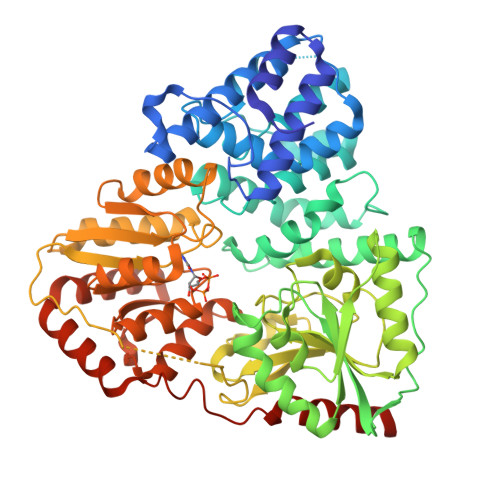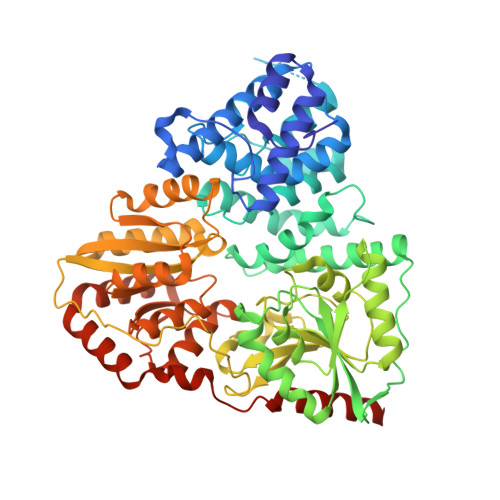Investigation of the Catalytic Mechanism of a Soluble N-glycosyltransferase Allows Synthesis of N-glycans at Noncanonical Sequons.
Hao, Z., Guo, Q., Feng, Y., Zhang, Z., Li, T., Tian, Z., Zheng, J., Da, L.T., Peng, W.(2023) JACS Au 3: 2144-2155
- PubMed: 37654596
- DOI: https://doi.org/10.1021/jacsau.3c00214
- Primary Citation of Related Structures:
8J30 - PubMed Abstract:
The soluble N-glycosyltransferase from Actinobacillus pleuropneumoniae (ApNGT) can establish an N-glycosidic bond at the asparagine residue in the Asn-Xaa-Ser/Thr consensus sequon and is one of the most promising tools for N-glycoprotein production. Here, by integrating computational and experimental strategies, we revealed the molecular mechanism of the substrate recognition and following catalysis of ApNGT. These findings allowed us to pinpoint a key structural motif ( 215 DVYM 218 ) in ApNGT responsible for the peptide substrate recognition. Moreover, Y222 and H371 of ApNGT were found to participate in activating the acceptor Asn. The constructed models were supported by further crystallographic studies and the functional roles of the identified residues were validated by measuring the glycosylation activity of various mutants against a library of synthetic peptides. Intriguingly, with particular mutants, site-selective N-glycosylation of canonical or noncanonical sequons within natural polypeptides from the SARS-CoV-2 spike protein could be achieved, which were used to investigate the biological roles of the N-glycosylation in membrane fusion during virus entry. Our study thus provides in-depth molecular mechanisms underlying the substrate recognition and catalysis for ApNGT, leading to the synthesis of previously unknown chemically defined N-glycoproteins for exploring the biological importance of the N-glycosylation at a specific site.
Organizational Affiliation:
Key Laboratory of Systems Biomedicine (Ministry of Education), Shanghai Center for Systems Biomedicine, Shanghai Jiao Tong University, Shanghai 200240, China.





















